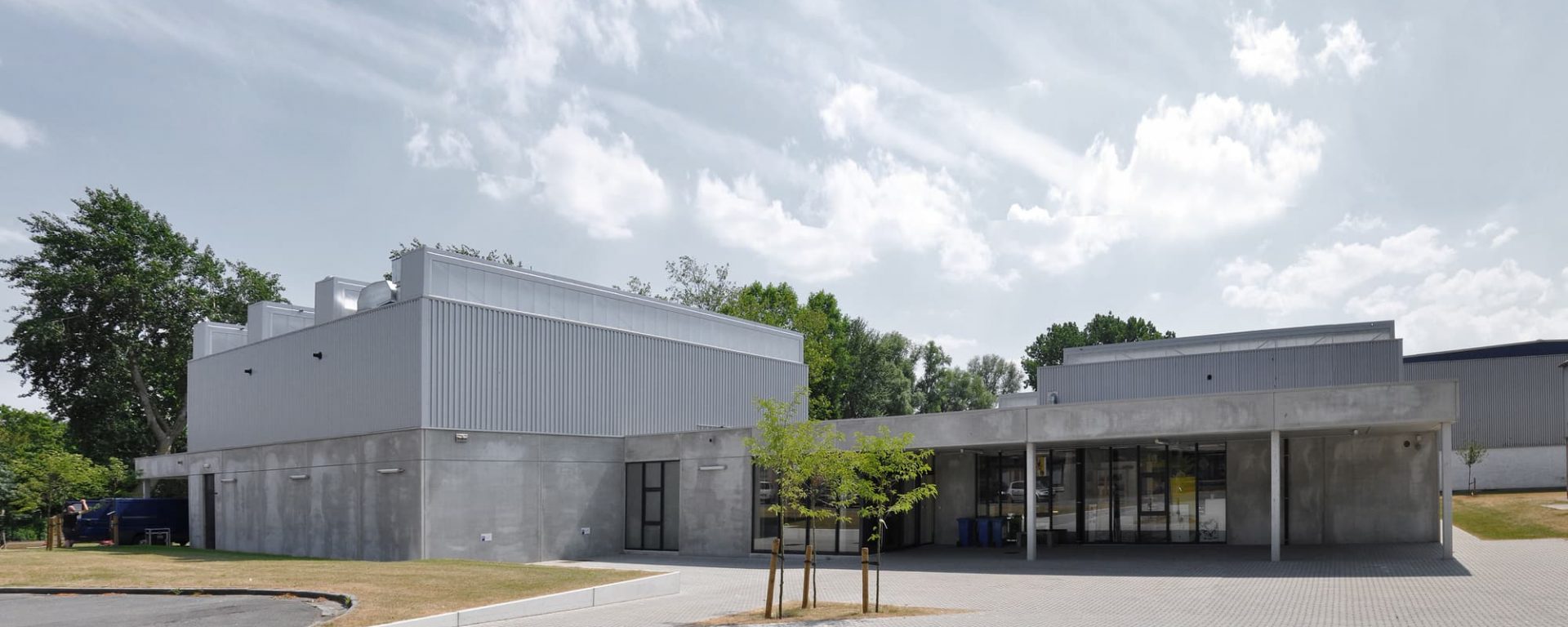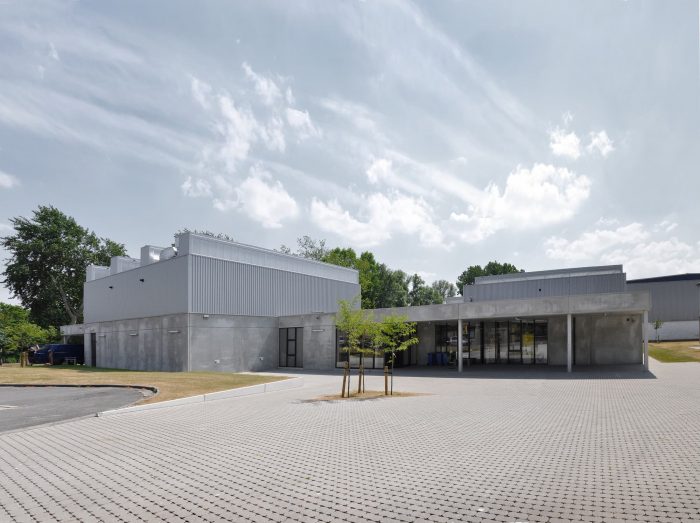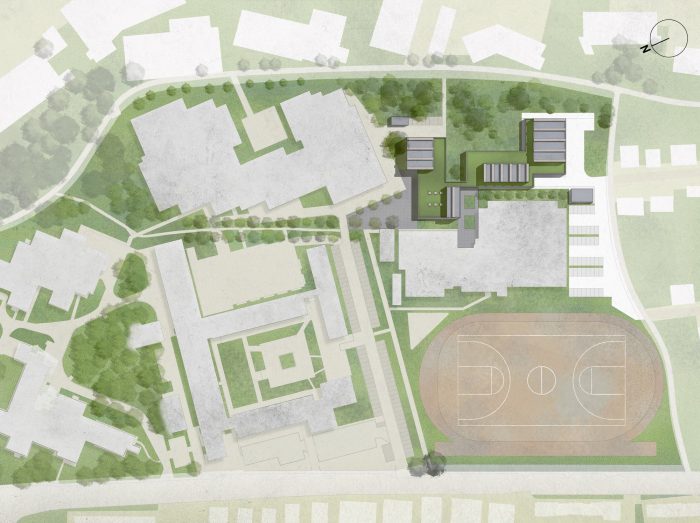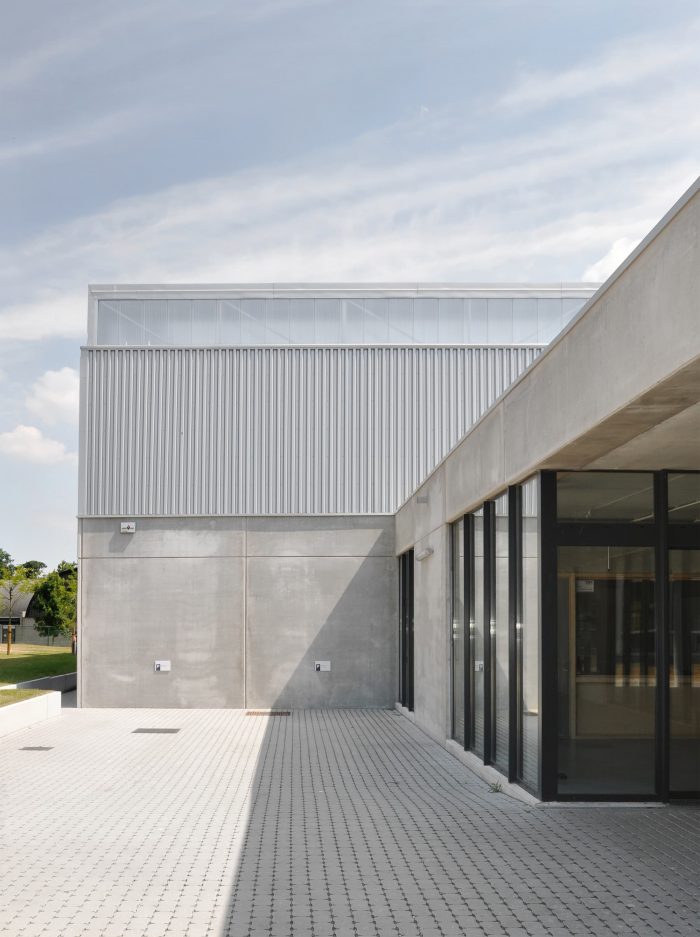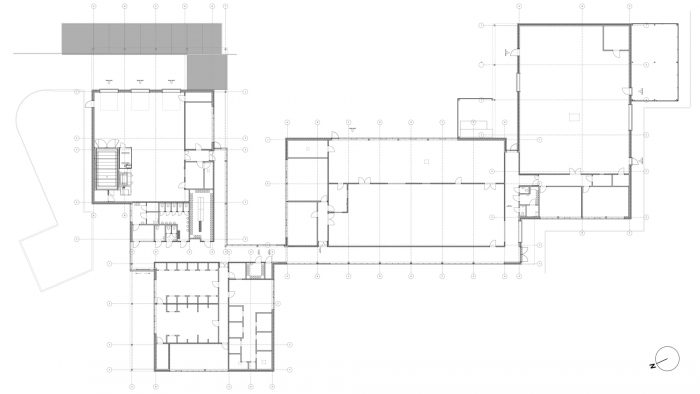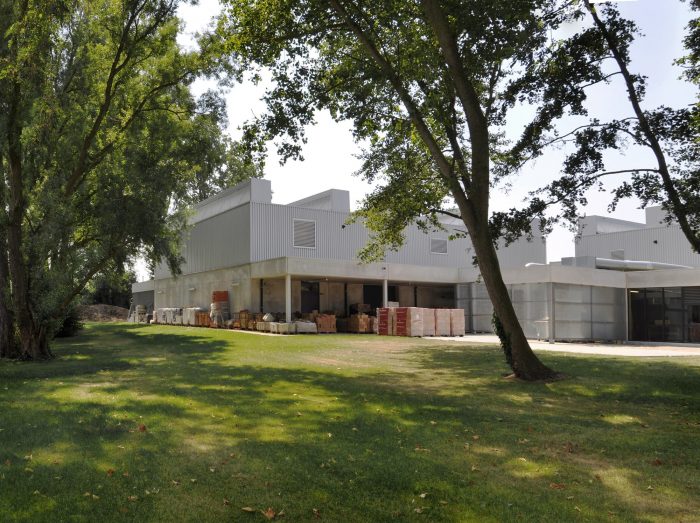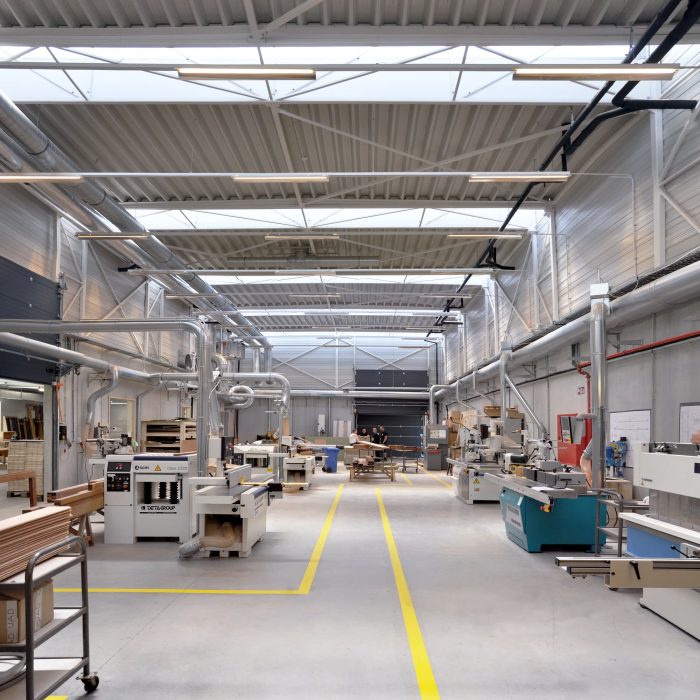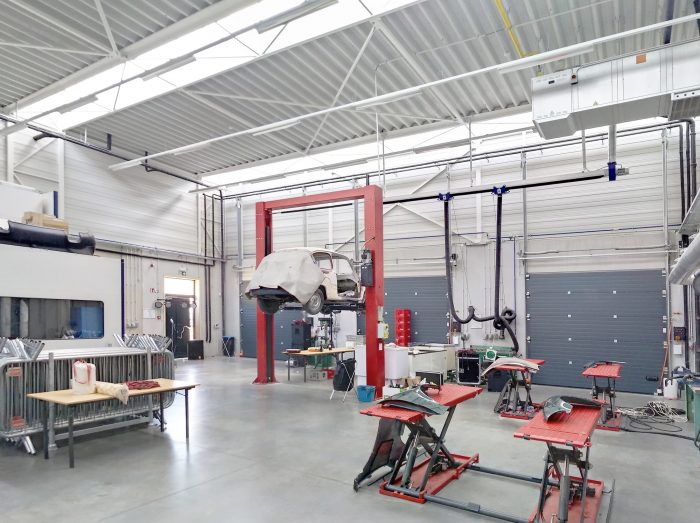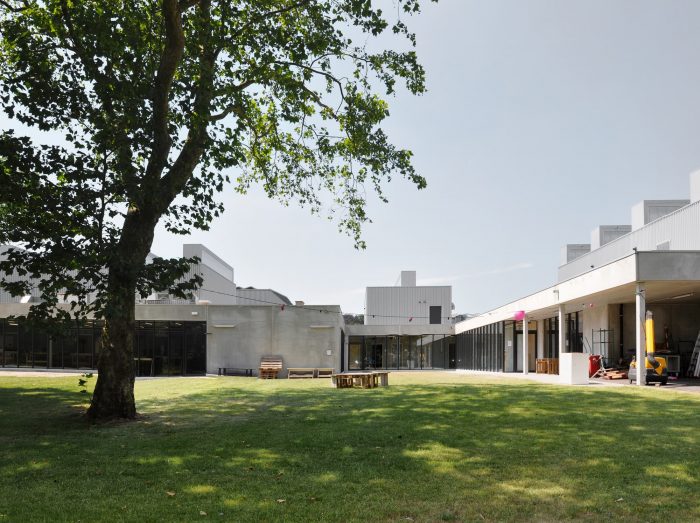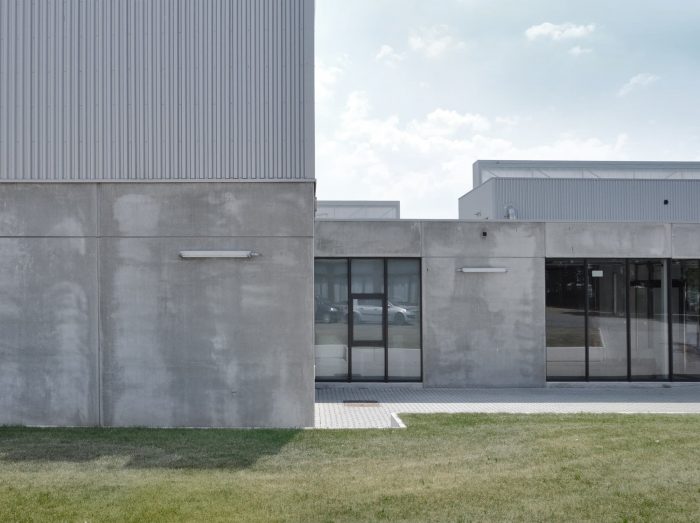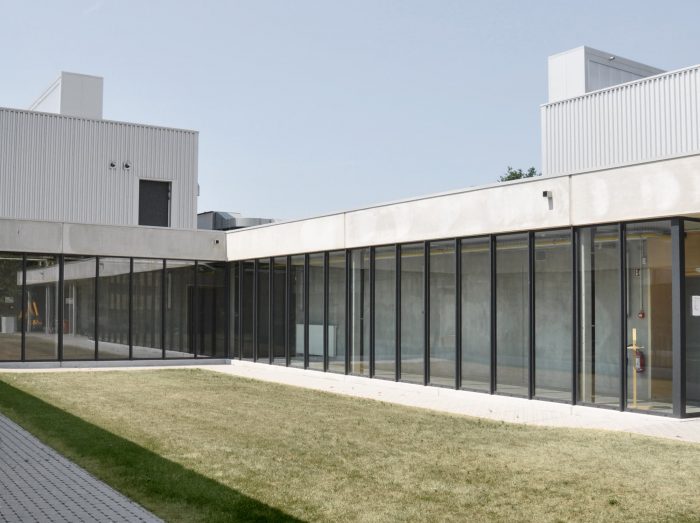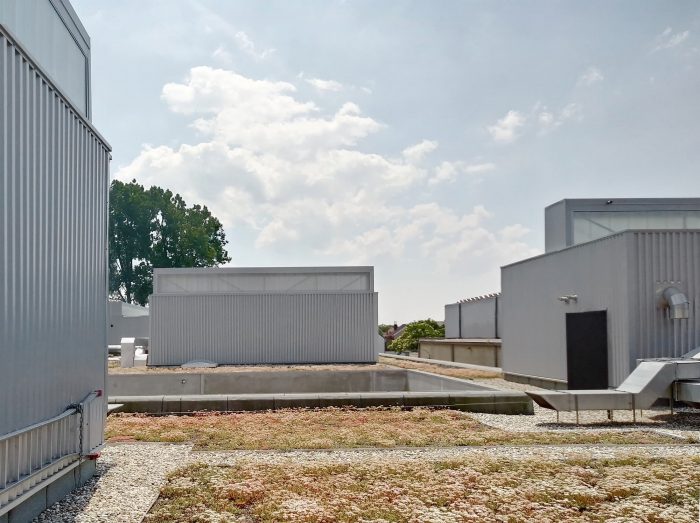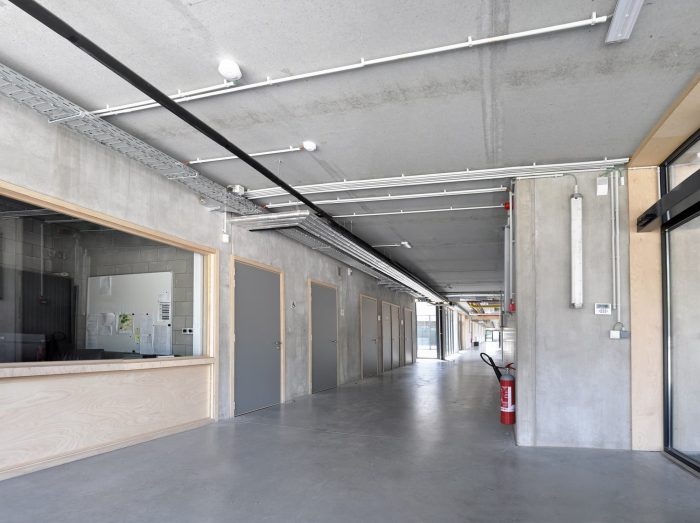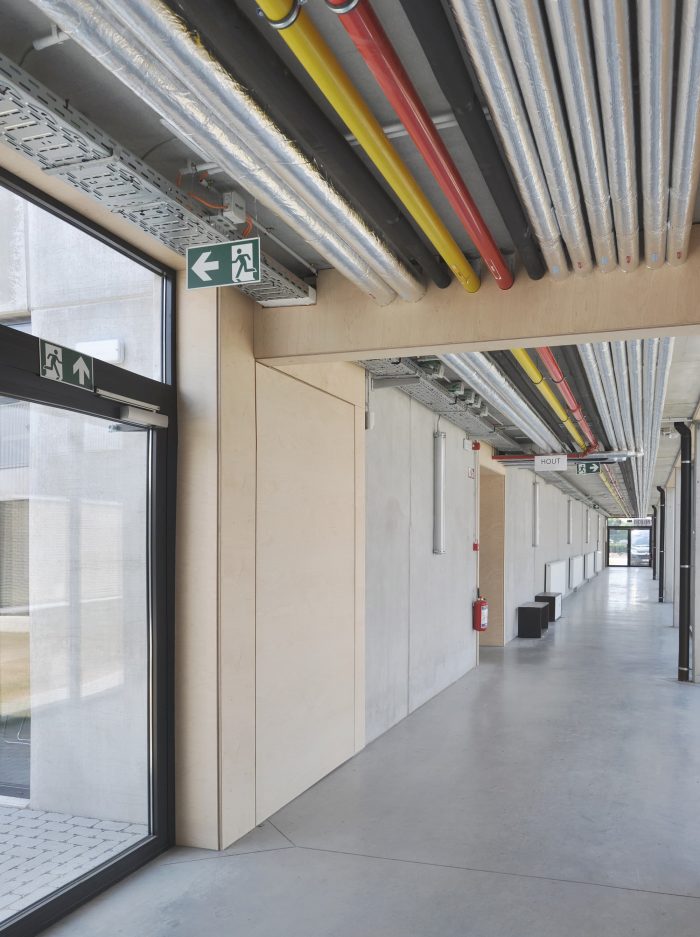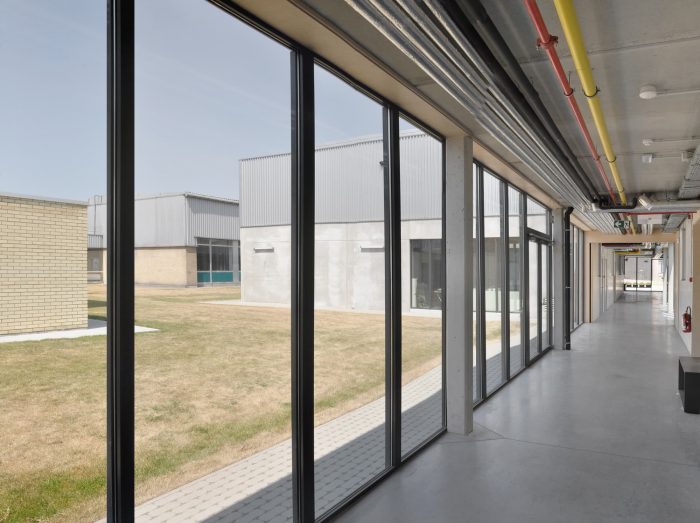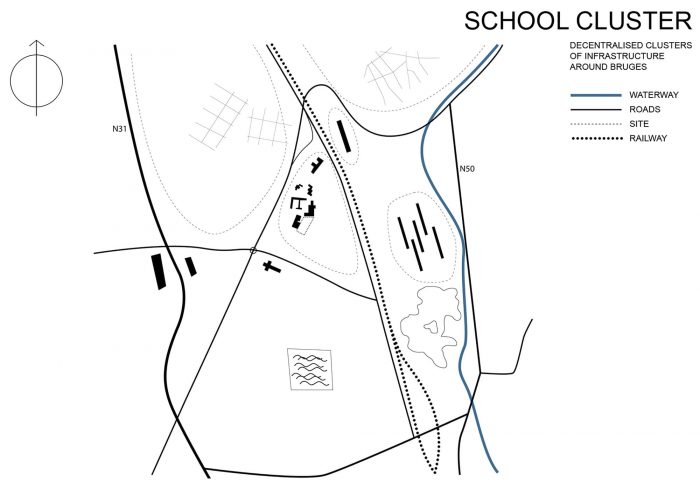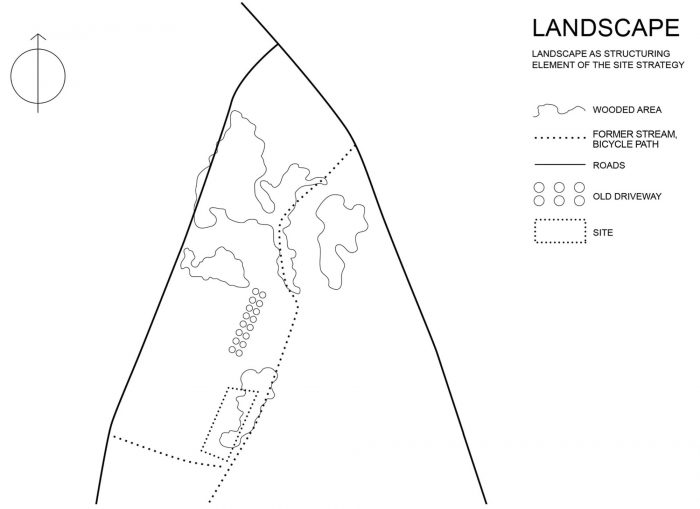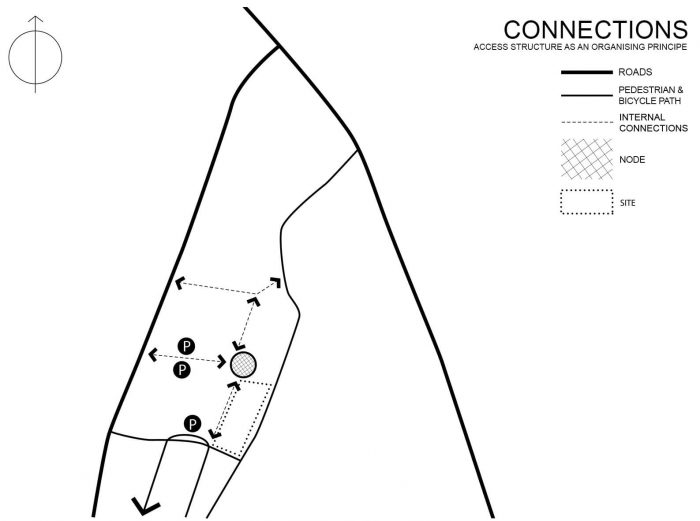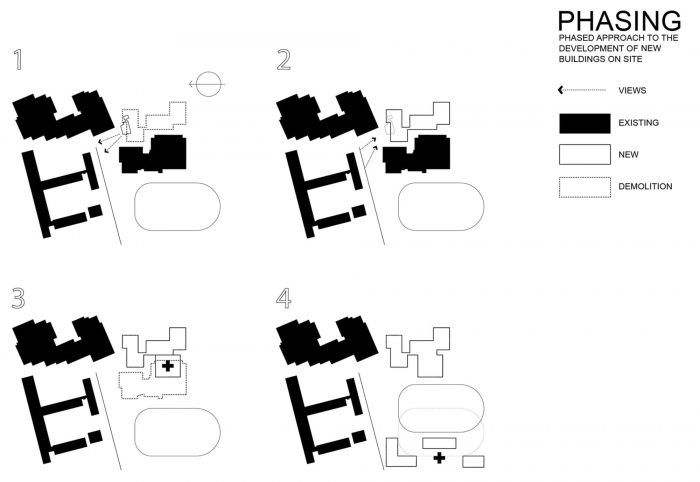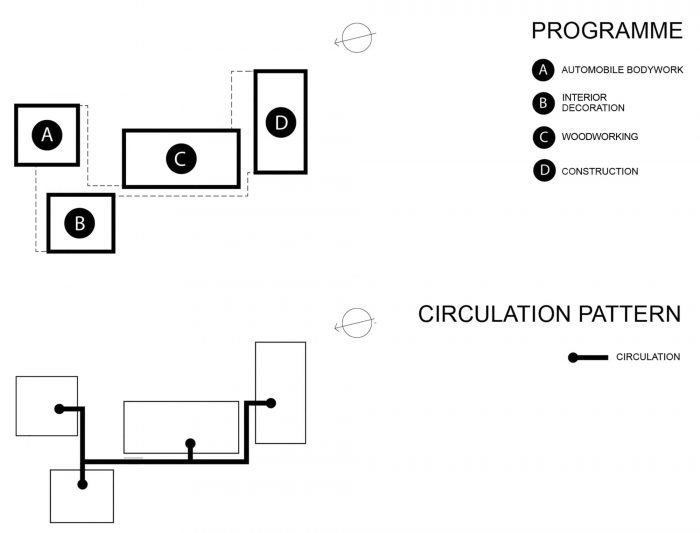为布鲁日KTA技术学校增加一个新翼的项目是通过 “Scholen van Morgen”(明日学校)佛兰德学校基础设施投资计划的竞争获得的。项目简介是设计一个新的功能建筑,以容纳以前位于布鲁日市中心的4个系(汽车车身、室内装饰、木工、建筑)。
The project to add a new wing to the KTA technical school in Bruges was obtained through a competition within the ‘Scholen van Morgen’ (Schools of Tomorrow) Flemish school infrastructure investment program. The brief was to design a new functional building in order to house 4 departments (automotive bodywork, interior decoration, woodworking, construction) that were previously located in the Bruges city center.
该项目由以下想法发展而来。建筑物的彻底定位将其与环境联系起来,同时同样有助于结构化。沿着场地后面的一条小溪的高大树木群,以及目前的通道网络,为这个过程提供了参考。
The project developed from the following ideas. A thorough positioning of the building connects it to its environment while equally helping to structure it. The groupings of tall trees along a small stream at the back of the site, as well as the current network of access pathways, informed this process.
该建筑围绕着一条新的轴线,与校园的主要交叉口相连,并导致新的通道与交付区。在建筑内部,这条新轴线呈现出一个封闭但不加热的内部街道的形状。主入口通向一个小广场,位于校园主要通道的交汇处。
The building works around a new axis, connected to the main intersection on campus, and that leads to new access with a delivery zone. Inside the building, this new axis takes the shape of an enclosed but unheated internal street. The main entrance opens up to a small plaza at the intersection of the main pathways of the campus.
独立 “亭子 “的空间概念反映了每个部门的相对自主性,其特点是它们的特殊性和氛围。每个亭子都包含工作室和教室。内部街道连接着这些不同的单元,但也是相遇和非正式互动的地方。作为一个整体,新翼可以被解读为一个低层建筑,而车间的体量则在其中升起。
The spatial concept of independent ‘pavilions’ reflects the relative autonomy of each department, characterized by their specificity and atmosphere. Each pavilion contains workshops and classrooms. The internal street connects these different units but is also the place for encounters and informal interactions. As a whole, the new wing can be read as a low-rise building out of which rise the workshop volumes.
建筑技术和材料的选择是根据功能和预算及技术限制来考虑的,但也有助于学校的建筑和总体外观:建筑的底座完全是用预制混凝土设计的,因此与上面的体量的轻钢结构形成对比。
The construction techniques and material choices were considered according to the function and answer to the budget and technical constraints, but also contribute to the architecture and general appearance of the school: the base of the building is entirely designed in prefabricated concrete and thus contrasts with the light steel structure of the volumes above.
双层的屋顶横梁允许更大的跨度,让光线从上面涌入车间。建筑基座和突出的体量之间的对立,通过选择覆盖层进一步加强:混凝土和波纹钢板。该场地规划是与Benoit Fondu景观建筑师合作设计的。
Doubled-up roof beams allow greater spans and let light flood into the workshops from above. The opposition between the base of the building and the protruding volumes is further strengthened by the choice of cladding: concrete and corrugated sheet steel. The site plan was designed in collaboration with Benoit Fondu landscape architects.
Architects: Planomatic architecture, Radermacher & Schoffers Architekten
Area : 2860 m²
Year : 2018
Photographs :BogdanCandea
Lead Architects : Lucien Kahane, Jean-Philippe Annys, Tom Radermacher, Rafaël Schoffers, Antoine Hanzen, Benoit Fondu
Structure Engineer : UTIL Struktuurstudies
Acoustics Consultants : Blasco
General Contractor : Alheembouw
City : Bruges
Country : Belgium

